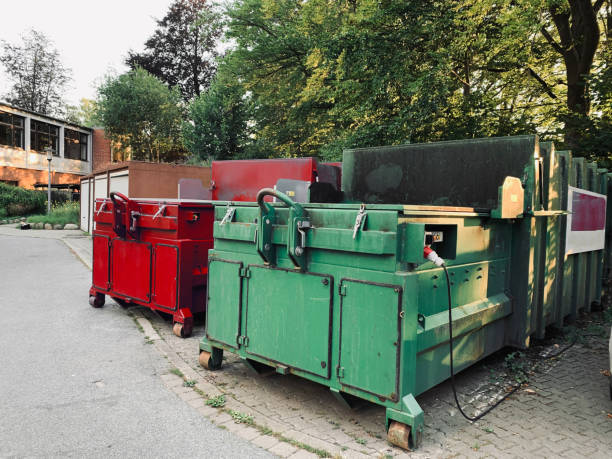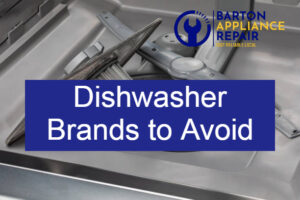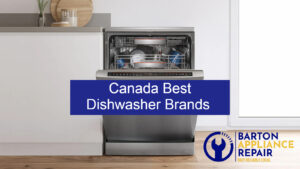A household trash compactor is the best way you can manage your home’s waste in a much better and environmental friendly way. This is the best solution to reduce the ever-increasing waste volume. The trash compactor can easily decrease the space your house waste takes. But along with this good news, you should know how to use a household trash compactor properly. You need to make sure it is properly working and you are taking the necessary precautions to avoid any accidents. To make you aware of how to use a household trash compactor, know the safety practices and pay attention to common problems like dealing with metal rod in the trash compactor.
The Household Trash Compactor
The trash compactor is the solution to the waste management problem. The basics of the household trash compactor are that it puts the force and compresses the waste into small waste bundles. The machine simply reduces the amount of waste by up to 75%, making the whole management super easy. The modern household trash compactors already come with extra safety features, that include automatic shut-off mechanisms and child-proof locks. But despite these, it is better to understand how to properly use them for the whole house’s safety.
Safety Precautions Before Operation
Most of us think that precautions usually come once the trash compactor is in the kitchen. But, there are some safety measures that you need to take before you fully install it. Doing this will help you prevent and avoid accidents and damage to the machine. Remember to install it in a nicely ventilated area that is away from heat and moisture. Along with this, check that the power cord stays in good condition and the whole unit is properly grounded.
Make sure that the compactor’s door seal should be looked at regularly for any wear and tear. A broken seal will let the waste out during compression or make the whole household trash compactor work badly. Additionally, make sure that the compactor bag is correctly put inside and secured before you start using it.
Related: How Moisture Sensors Work in Appliances and Why They Matter
How to Safely Use a Household Trash Compactor?
Using a trash compactor requires attention to detail and proper technique while using. Here’s how you can simply use your household trash compactor:
Step 1: Preparation Phase
Before doing anything else, you need to put the household trash compactor bag in it. You need to specifically use this bag because it is specially designed for the compactor model. This is because the normal garbage bag isn’t strong enough to withstand the compression force. So, make sure that the bag is positioned properly according to your model’s details. It is mostly done by folding it over the bag frame and locking it into place.
Step 2: Loading Process
You can start by putting a layer of softer materials at the bottom of your household trash compactor. After this, you can add other waste. Just remember to evenly spread in the bag. Make sure to avoid any metal objects like metal rods because these can cause some serious damage. When loading larger items, make sure to break them down first and then compress them evenly.
Step 3: Compression Cycle
Once you have added a good amount of waste (usually when the bag is about ¾ full), close the drawer completely. Most of the models need you to firmly press down on the drawer to engage the safety lock. Then turn on the compression cycle according to your model’s instructions which typically happens by pressing a button or turning a key. The cycle will take 30-60 seconds.
Step 4: Monitoring
During the compression cycle, listen for any unusual sounds that might show you a problem, like a metal rod in the household trash compactor or other inappropriate items. If you hear noises that are concerning, stop the cycle immediately using the emergency shut-off button.
Step 5: Bag Removal
When the bag reaches its capacity (which is usually after several compression cycles), remove it carefully. Most household trash compactors will show when the bag is full. When that happens, turn off the unit, open the drawer, and carefully remove the bag from its frame. Then, tie the bag carefully before removing it to prevent any spillage.
Related: Safe Practices for Live Voltage Testing in Appliance Diagnostics
Handling Metal Objects
Metal objects sometimes turn out to be quite a challenge in the case of household trash compactors. When metal items are in a compression chamber, they will usually damage the machine’s internal parts or end up creating safety hazards. Sometimes, the hard metal objects might spring back out unexpectedly during compression which can cause you injury or damage the compactor’s ram plate.
Usually, it is the metal rods that specifically have risks. Since they are quite rigid and long, they end up dangerous in a compactor. These items can:
- Puncture the compactor bag
- Damage to the compression mechanism
- Create dangerous projectiles during compression
- Cause the ram to jam or malfunction
Safe Loading Practices
Along with taking care of the household trash compactor, you also need to make sure you are properly loading the waste. Doing this will help you reduce the safety risks. As said before, you can start by layering softer materials at the bottom of the compactor bag. This would create a cushioning effect for the other waste items added later. Remember to distribute the waste evenly across the bag to make sure the compression is uniform.
When you add new items, take the time to arrange them. Make sure you are not overcrowded as it can lead to uneven compression or strain on the motor. Break down the larger items into smaller parts before you put them in the compactor to prevent jamming.
Related: Full-Size Ovens and Modern Lifestyles: Are They Still a Match?
Items That Should Not Enter Your Compactor
There are some things that you should never put in your household trash compactor. It is equally important to know proper operation techniques. Make sure you are not putting these things in:
Hazardous Materials
Paint cans, batteries, and chemical containers can end up as safety risks. These might release harmful substances when compressed or cause dangerous chemical reactions.
Flammable Items
Aerosol cans, matches, and other flammable materials can create explosion risks if they are under pressure. Even the empty aerosol containers have enough residual pressure to end up as dangerous when compressed.
Sharp Objects
Along with metal rods, other sharp items like broken glass, needles, or razor blades should never enter the household trash compactor. These things can tear the bags, damage the equipment, and create injury risks when you remove the bag.
Related: What Are Wiring Diagrams and Why Do They Matter for Your Appliances?
Maintenance for Better Operation
Regular maintenance makes sure that the household trash compactor’s life is long and prevents all types of safety issues. You should clean the compactor’s interior monthly, and pay special attention to the ram plate and compression chamber. You should check the moving parts for any signs of wear. Listen for unusual noises when it’s turned on.
When you are cleaning, you should use the right cleaning products that are specifically designed for appliances. Remember to avoid harsh chemicals that might wear down the metal parts or leave harmful marks. Before anything else, always unplug the unit.
Conclusion
Using a household trash compactor is good, but knowing how to use it safely is important. You need to be aware of the risks, proper techniques, and the safety guidelines you need to follow. Once you understand the risks of metal objects, how to maintain the household trash compactor properly, and how to follow the correct working procedures, you can actually increase the benefits of your compactor with minimum safety risks. Just remember that when you are in doubt if you put it in the compactor or not, just dispose of it normally. Forcefully putting something in it can end up faulty. If you are comfortable repairing it on your own, then go ahead but if not, call a Barton Appliance Repair professional to get the best service!





